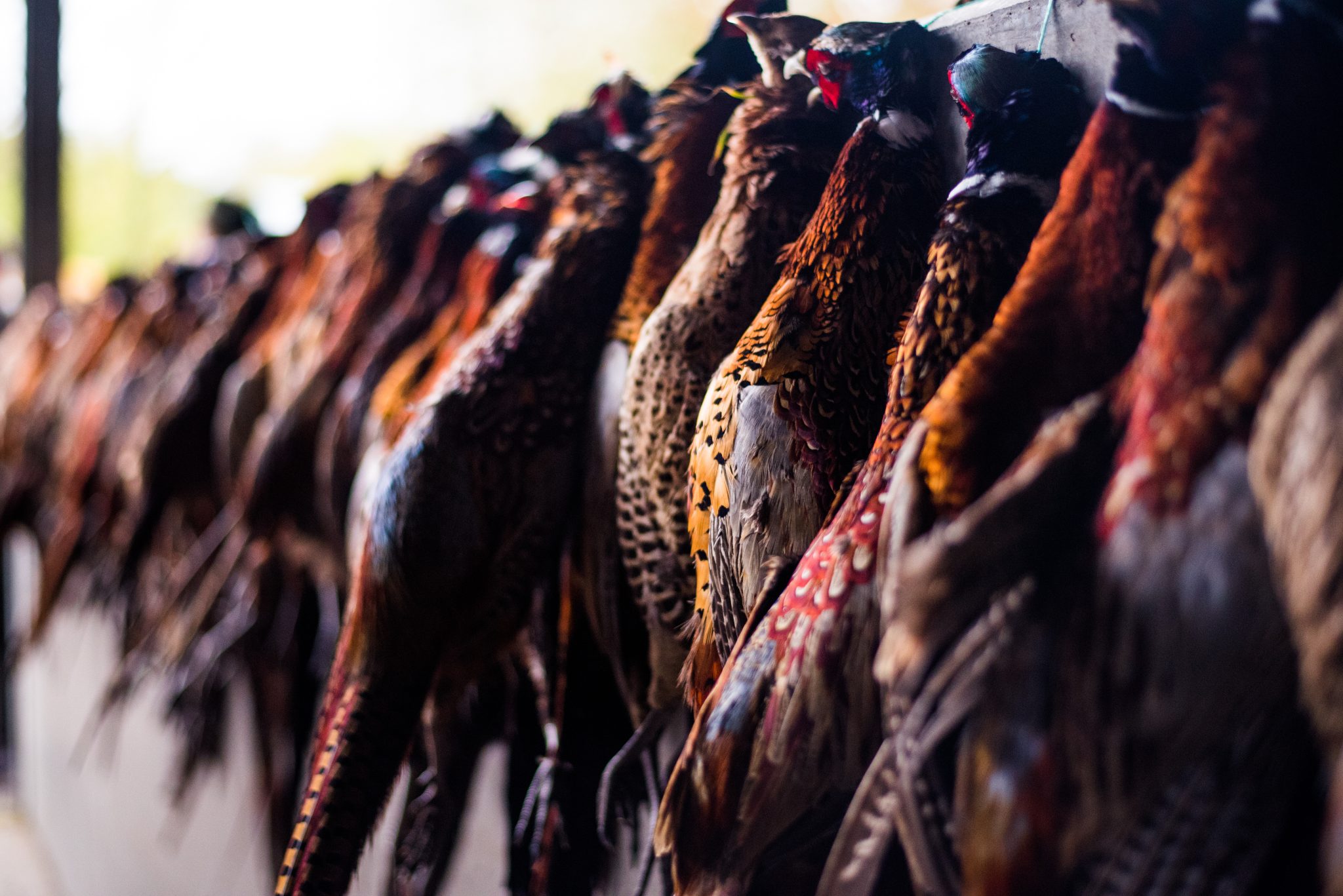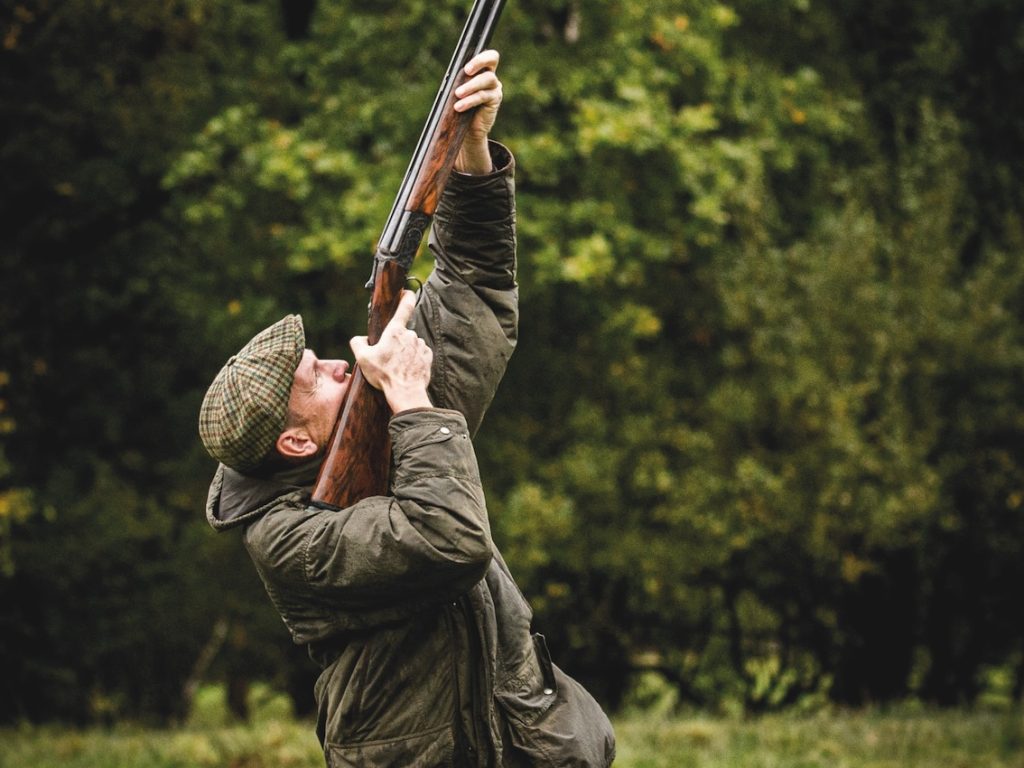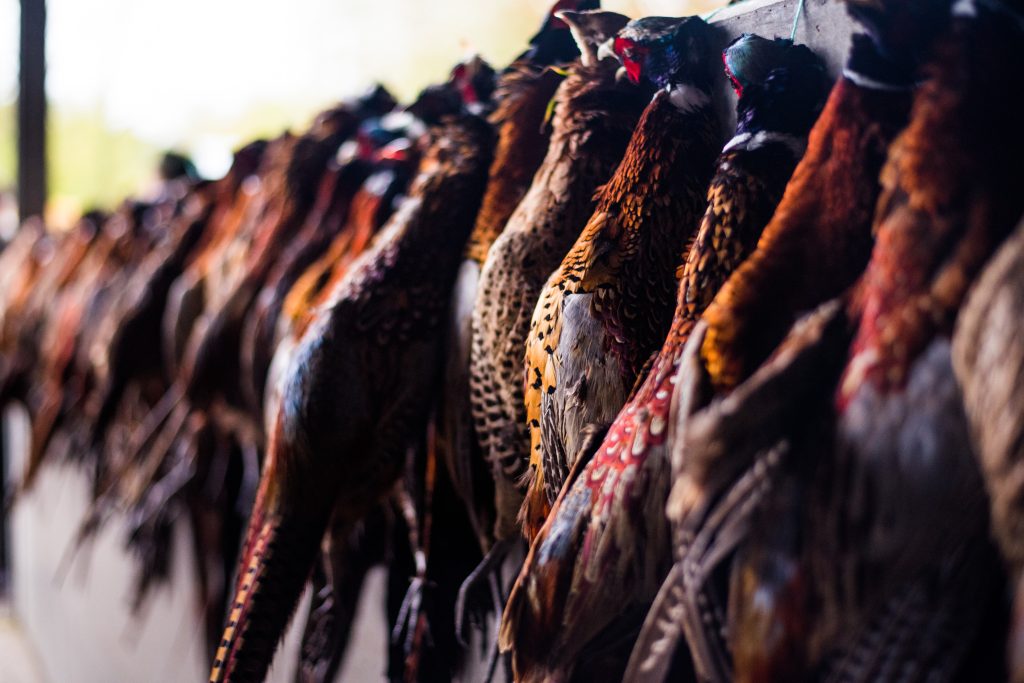Win CENS ProFlex DX5 earplugs worth £1,149 – enter here
Partridge & pheasant shooting in Angmering, West Sussex
Partridge & pheasant shooting: Fine partridge and pheasant shooting in good company.
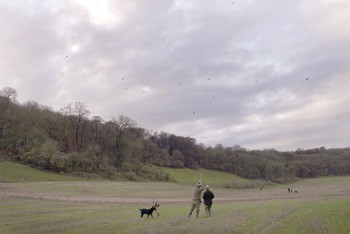
Distances and sizes are often difficult commodities to grasp.
Even experienced guns will under- or over-estimate the heights of their quarry.
And unless you happen to be a practicing land agent or a farmer, it is difficult to put an immediate estimate of acreage on a tract of cultivation or woodland.
Nigel Clutton is vastly experienced in land, agriculture and shoot management and has no such problems in any of these disciplines.
This is convenient, as he is closely involved in the commercial and sporting enterprises that proliferate on the Angmering Park estate.
Nigel is a patient man with an innate countryman’s eye and a love for his environment.
In this instance it is the 6,000 acre crescent of estate land that sits roughly between the A27 in the south, to the South Downs Way in the north, and from Worthing in the east towards Arundel in the west, which he oversees on behalf of its current owners.
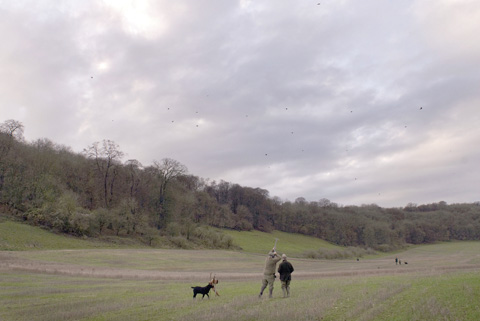
I began to appreciate the scale of the estate when, while completing our reconnaissance, he mentioned that it contains seven miles of the South Downs ridge, and then dropped into the conversation that when standing at its highest point, estate land extends to the horizon on all 360 degrees of the compass.
This spacious tract of open high down, steep coombes, forestry and farmland could have been made for shooting.
But it was less than 30 years ago that it began to be planted and managed specifically for that purpose.
It was our host, together with his brother-in-law Colin, the late Lord Cowdrey of Tonbridge, who had started the shoot in 1981, who found himself in the enviable position of being able to bring the transition about.
He set about the task with a thoroughness of research, understanding of natural topography and eye for detail that has given the estate its 35 individual drives, any one of which would be the envy of his peers.
Having personally shot a mixed bird day earlier in the season, I returned to watch the members of a regular team shoot four of the most spectacular pheasant shooting drives.
It was a day that not only delivered squally wind and rain, but also some beautifully presented birds that showed the quality of the ground, the foresight in its drive planning, the skill of long-time headkeeper, Len Ireland, and the abilities of the line.
All the drives have names that resonate with history, ancient and modern, or degrees of potential difficulty.
So as we approached Oh God!, the first morning drive, to the western extremity of the estate, it was with some trepidation.
Guns, loaders and various hounds betook themselves to peg positions along the floor of a long, grassy valley which curls gently around the base of a steep bank, topped by a hedge line which provides the flushing point.
Early birds swirled out from the right flank as the beaters began to move but very soon there was a steady and well-balanced flush, which brought the strong pheasants straight over the guns, making for the standing timber on the hill behind them.
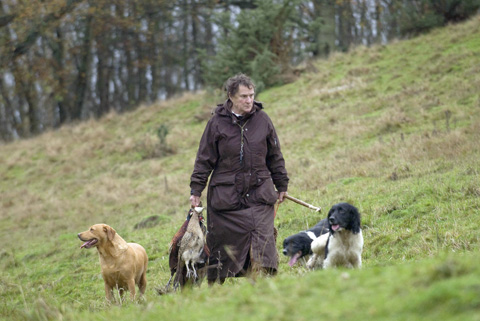
For their second drive, the team moved across the estate to the ridge that extends south east from the crest of Harrow Hill.
They pegged in a wide, shallow valley facing a steep, scrub-covered bank that comprises The Dairy.
One of the guns, Richard Constant, who was on the far left of the line, below Harrow Hill, took his position a little further up the slope than the rest of the line, and saw some difficult crossers.
For the remainder of the guns in the line, the birds rose from the flushing point amongst the Ethiopian cabbages and maize beyond the crest of the bank and carried on rising as they flew over the line.
The host carries a gun on the home syndicate days and having watched the flight lines, positioned himself behind the centre of the gun line.
The guns retreated from the intensifying rain to take their mid-morning snacks in the shelter of a barn over at Lee Farm, while the picking-up team of spaniels, led by Andy King and George Butler, gathered the fallen birds.
One of the newer parcels of bushy cover and cotoneasters planted by Nigel in 1988 – named Cluttons Clump in recognition – sits on a high and frighteningly steep grass bank.
In increasingly difficult conditions, when drizzle turned to heavy rain and then light hail, the guns stood at the base of the bank with their backs to a strip of copse and did their best to deal with some very quick early partridges, followed by flushes of pheasant.
It was difficult to know which side of the equation was the wetter and more miserable but the birds kept flying and the guns kept shooting until the horn signalled the relief of lunch.
By the time the guns had reached their pegs on Clock Tower, the only drive after a shepherd’s pie lunch, there was the suggestion of sun breaking through high scudding clouds and a meaningful breeze blowing left to right across the line.
Guns stand along the flat base of another long, gently curving valley floor.
Ahead of them looms a big, big bank with clumps of deciduous trees interspersed with strips of grass that extend upwards to its timber-clad crest.
Some beaters and flag men begin on the peg line and tap up the bank, to be joined by others coming from the right flank.
And when the two groups come together, the bank is walked from right to left.
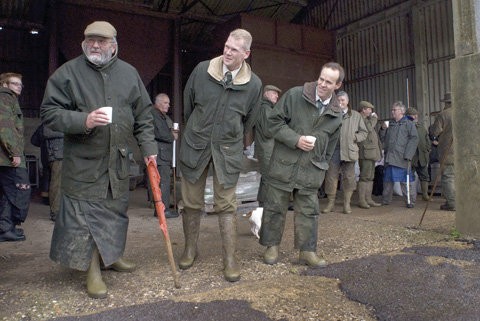
Whilst Martin Reed and his wife Shirley, handling a home-bred brace of yellow retrievers, waited on the back peg for the action to reach them, Nigel, Sir Robert Finch and Nick Brigstocke on the right of the line began to see small flushes of pheasant over them.
They dealt with them in fine style, but before long the whole team was reaching for the sky.
Over tea and cake in the shoot lodge the team compared notes with their host and the headkeeper.
All appeared to be satisfied with their day. Indeed, it would have been highly surprising if they hadn’t been satisfied, for this team have shot together on Angmering ground for many years, know each other well and are universally tidy shots.
An average of 6.7:1 on what had been a difficult day weather-wise would have pleased any line of guns who fancy their chances.
With several drives on the estate regularly seeing averages well north of 10:1, they had proved that experience counts for all.
Over the past 10 years, Angmering Park has built itself a glowing reputation for showing high-flying birds that tax the best.
This is due in no small part to the immense care that Nigel has taken painting his shooting picture on what was originally a largely blank canvas.
There can have been few challenges that he would have enjoyed or relished more.
Angmering – a brief history
The 14,000 acres surrounding Arundel has been owned and passed by inheritance since the Norman Conquest. The acreage which now constitutes the Angmering Park estate only came into being as a separate entity in 1975, after the death of Bernard, the 16th Duke of Norfolk. Separated from the dukedom, the castle, Arundel Park and the 6,000 acres of Angmering passed into the ownership of Duke Bernard’s daughters. Under its previous ownership, Angmering was shot once annually as a rough shoot, as the duke chose to take most of his sport within Arundel Park. Underlying soil is chalk along the ridge with its fair share of big flints and about 200 acres of clay caps. The land lies between the 33 metre and 189 metre contours, enjoying around 35″ of annual rainfall. It housed the last recorded leper colony in England, an Iron Age fort and provided a tank training and gunnery range during the Second World War. Traditionally, the flatter ground had been laid for hunting with copse coverts.
Farming on the estate
“My wife, Sarah, and her sisters farm 2,600 acres in hand,” explained Nigel. “There are two main tenanted farms and an equestrian enterprise which occupies about 180 acres. Around 1,680 acres are arable cultivation, typically planted one third to wheat, one third to spring and winter barley and one third to break crops; we favour oilseed rape, peas and beans.
“The arable land is minimum tilled and ploughed every four years to keep things fresh. We also have 650 acres of permanent grassland which supported a dairy herd until 2004, but now we have 40 pedigree Herefords with followers (which will rise to 100 in time), more than 800 greyface mules and 400 lambs, which we either sell on as shearlings or bring into the flock. Farming and pheasant shooting work closely hand in hand here.”
Top Drive: The Dairy
The valley runs south west/north east, with the upper levels of the hill above the guns following the 160 metre contour. The line pegs along the valley floor 60 metres below the crest, and that gives the birds a flying start on their flight line to two pens on the slopes well behind the line. The grassy slope ahead rises deceptively steeply and is of largely open aspect with clumps of bushes interspersed across its left flank, where a track rises diagonally across it. Beyond a hedge line on its crest, which forms a natural flushing point, the top of the bank is planted to cover crop. The more predictable maize and kale were joined this season by an experimental crop of Ethiopian cabbage that was standing four feet high in the autumn and which has found some favour with the keepers. Some beaters begin their movement high on the shoulder of Harrow Hill, pushing birds from the left along the bank to find the temporary sanctuary of the cover crop, while others begin their walk on the right of the line and over the crest, bringing in the outlying scrub and crop. There is some judicious tapping up the hedge line on the right to join the main team, who then move progressively along the crest and spread out well beyond it. A stop or two on the right of the guns and in their view encourage forward any birds tempted to filter too far right. The birds are then dribbled out in small flushes to give the guns some sighting practice, before the bigger flushes of high, fast pheasants begin to come off the top of the bank. By the time the two beating parties have met on the left flank, every peg will have seen its share of birds pass high overhead or as high, fast crossers.
Managing the partridge and pheasant shooting operation
Working closely with headkeeper Len Ireland, now in his 28th year at Angmering, the original planning has produced two beats and 35 drives. The partridges are brought forward on the higher land and the pheasants flown over the deeper valleys and among the woodland.There are no public roads across the estate and the many footpaths and bridleways pose no real problem, as partridge and pheasant shooting is mostly on weekdays when they are sparsely used. The major planting on the ridges started after the hurricane of 1987, so all the plantations are still young and improving. But there are 12, six-eight acre pens in the better established woodland. Though the estate accommodates the prevailing south westerly air flow, there are sufficient drives at all angles to cope with anything, though there is an optimum time in each day when each drive is at its best.Partridge days normally comprise six drives and pheasant shooting days offer four, brought to fruition by up to 20 beaters and six or seven pickers-up. All birds are bought in from the continent as seven-week old poults and heavier, bigger breasted, longer legged ring-necks are most favoured by Nigel Clutton and his keepering team.
“We start our birds off around the beginning of July in batches of 2,000 and feed well so they don’t wander far until we are ready for them,” said Nigel.
“We shoot about one third of what we put down and catch up a fair quantity of cocks and hens to assist the breeding programme. This policy has served us well over many seasons. Len and underkeepers Steve Barker and Mick Jellis are kept busy controlling the vermin population and the fact we have shooting estates all around us helps this process.
“It was after the hurricane that Colin Cowdrey, Len Ireland and I began the planning and subsequent planting regime which is now delivering Angmering’s true sporting potential. When the decision was taken to develop the partridge and pheasant shooting, we assessed the topography and existing agricultural cropping regime.
“We now have around 1,320 acres of major woodland, mostly beech with deciduous fringes and around 100 acres of conifers. The woodland is as actively managed as the farmland. The execution of those first plans – creating plantations on the ridges and pens in the woodlands – has given me the most immense pleasure. We are now showing really good birds in very traditional surroundings.
For more information about the partridge and pheasant shooting at Angmering Park contact Nigel Clutton on 01903 882220 or alternatively email Nigel Clutton
Related Articles
Get the latest news delivered direct to your door
Subscribe to Shooting Times & Country
Discover the ultimate companion for field sports enthusiasts with Shooting Times & Country Magazine, the UK’s leading weekly publication that has been at the forefront of shooting culture since 1882. Subscribers gain access to expert tips, comprehensive gear reviews, seasonal advice and a vibrant community of like-minded shooters.
Save on shop price when you subscribe with weekly issues featuring in-depth articles on gundog training, exclusive member offers and access to the digital back issue library. A Shooting Times & Country subscription is more than a magazine, don’t just read about the countryside; immerse yourself in its most authoritative and engaging publication.





